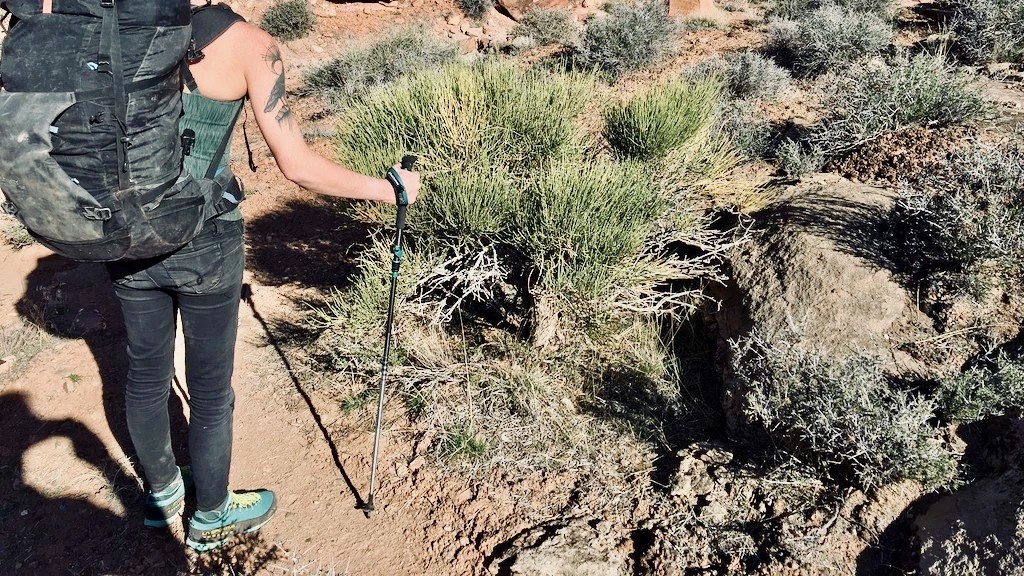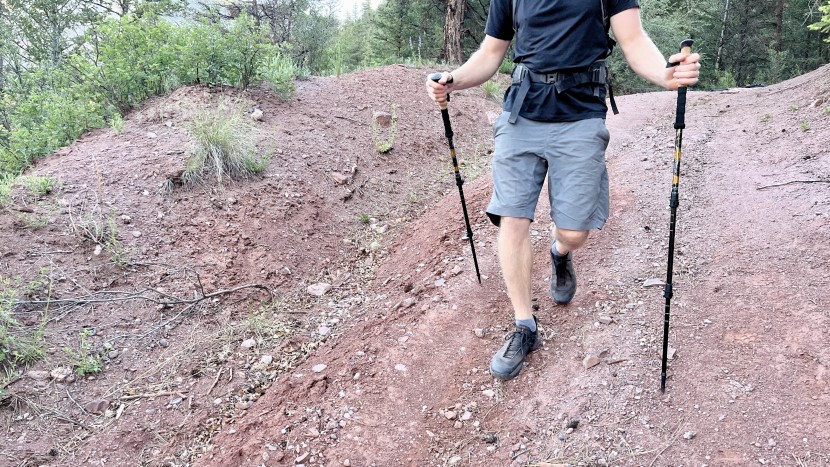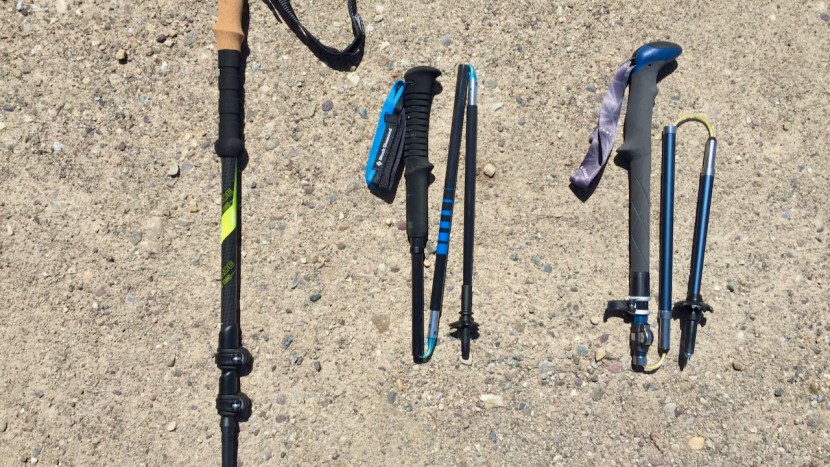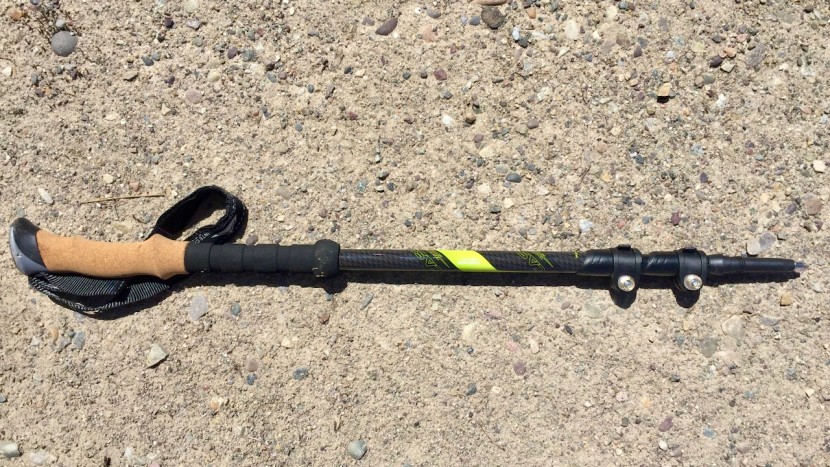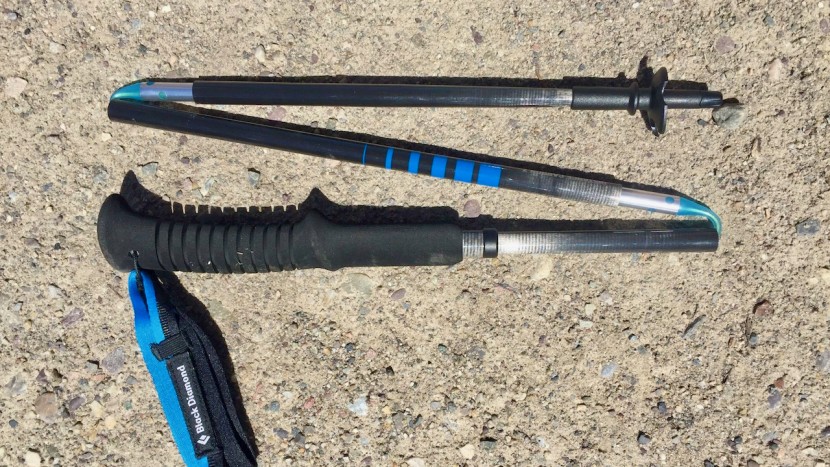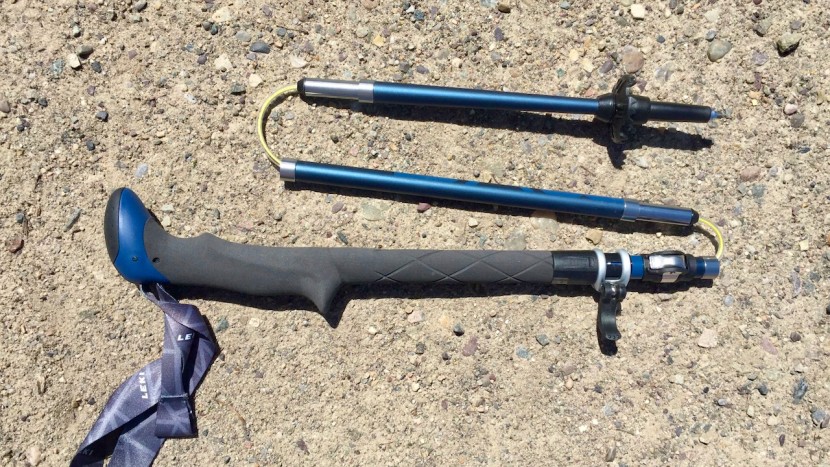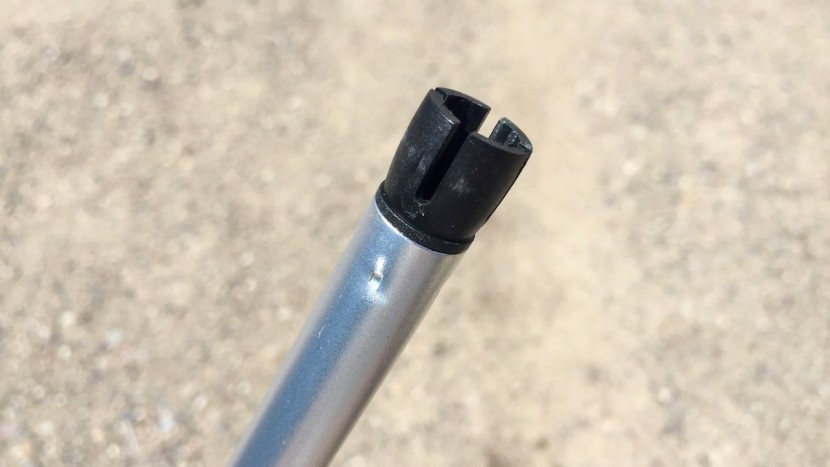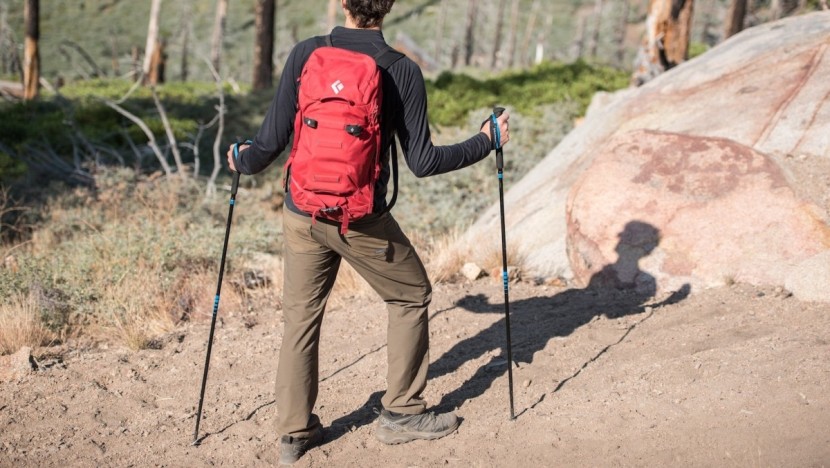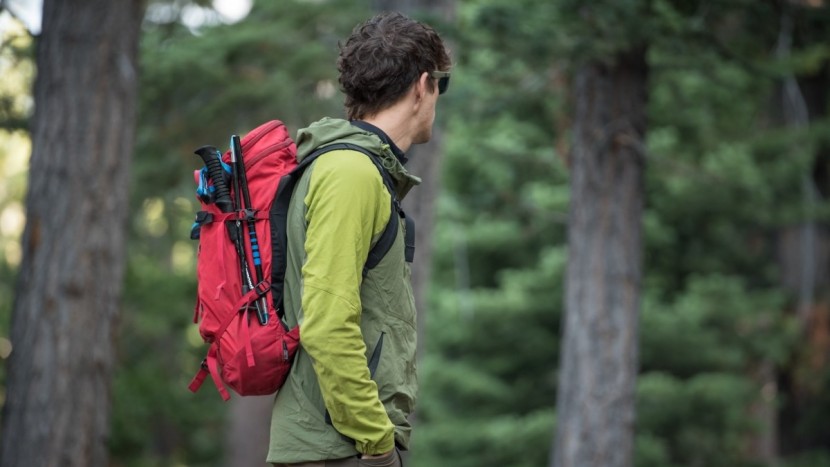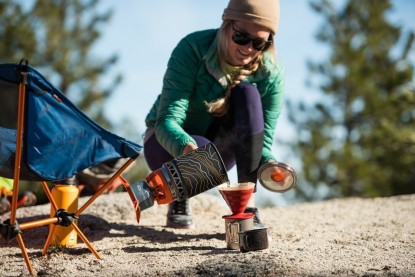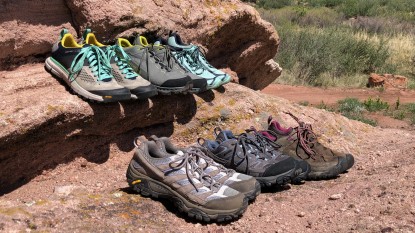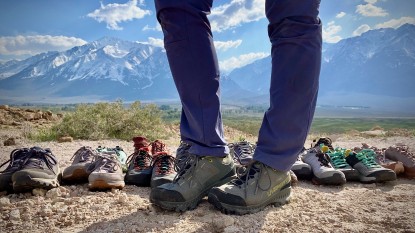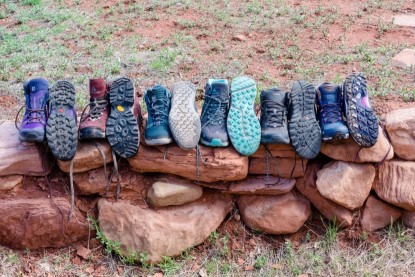Trekking poles have risen from obscurity and are now a key piece of gear for hikers, backpackers, trail runners, trekkers, and climbers. They allow you to incorporate your upper body into uphill travel and help absorb shock on your knees while descending. The more weight on your back, the more trekking poles become lifesavers. Some studies have shown that using poles can reduce impact force by up to 40% on your knees, especially on long downhills. No matter your age, using poles while hiking will save energy and reduce knee pain. They also help with balance during tricky creek and log crossings.
If you are wondering “Why do I need trekking poles for hiking?”, then check out our 10 Reasons For Trekking Poles article as well as The Best Trekking Poles review where we rate the top options on the market head-to-head in a series of real-world comparisons. We looked at a variety of factors in each pole, including weight, durability, comfort, and more.
Trust us. Integrating trekking poles into your hiking kit will allow you to hike more miles and keep a smile on your face while doing so. Once you try them out, you'll never look back. Read on to discover which pole is right for your needs and activities.
Design Configuration
Most trekking poles are collapsible and come in one of three designs: three-section telescoping, folding, and combination versions. The design configuration mostly refers to how a pole lengthens the three sections into a strong, extended pole. In general, telescoping poles are very strong and adjustable, folding poles are light and collapse smaller, and combination poles allow for a mix of attributes. Each style offers distinct advantages and disadvantages.
Three Section Telescoping
Three-section telescoping poles are the most common design on the market. They are the strongest and most durable type of pole and also allow for a wide range of length adjustment — usually between 12 and 16 inches. Furthermore, they are generally less expensive than other designs.
The major downside to the telescoping pole design is that the minimum packed size is longer than any individual piece of the pole. This means that they don't pack to a short length for easy stowing on the outside or inside of a backpack. If your expected activities include time when you'll need to use your hands on the terrain while moving, such as scrambling and technical climbing, you'll need to strap your poles to your pack or stow them inside, so the final packed size is important to consider.
Folding
Folding poles are relatively new to the trekking pole market. They are the lightest and most compact models out there, but they aren't nearly as durable as most three-section telescoping poles. They are, however, durable enough for most climbers and hikers wearing lighter backpacks and are perfect for runners. For climbers, folding poles are especially nice because they can disappear into a backpack during an alpine climb. In general, folding poles are significantly lighter and more compact than three-section telescoping poles. Several of the folding-style poles don't feature removable baskets, and they lack the ability to change lengths depending on the user's height or terrain needs.
Combination
Many new folding-style poles also feature one section of telescoping poles so that it is possible to adjust the pole length, though not as much as a three-section telescoping pole. Usually, combination poles allow six to eight inches of length adjustment, as much as you'll ever need. We found this to be a great addition to the folding-style pole as it is more versatile. If you don't mind the extra few ounces, these poles take the best aspects of each style. The combination design is our favorite of the modern trekking pole designs.
Fixed-length Poles
Some poles come in a single length or a fixed length or feature no length adjustment or collapsibility. This design helps save weight and add strength, as there are no adjustment components, which are heavy and add weak points to the shaft. To mountain runners, fast hikers, and those wishing to shave every ounce from their kit, poles using fixed-length designs may be desirable. However, they lack the versatility and adjustability desired by most users.
Shaft Material
Modern trekking pole shafts are constructed from either carbon fiber or aluminum.
Carbon Fiber
Carbon is a light and stiff material used in products that need to support a lot of weight but also need to be light. Carbon fiber poles are extremely strong when loaded vertically and are the lightest pole options on the market. However, they are weak when bent horizontally. They also can chip or crack easily on rocks, which makes them more likely to snap. Carbon fiber poles are best for light- to moderate-duty use, where weight is the most important consideration, such as ultralight backpacking, climbing, and running. Be prepared to pay more for carbon fiber poles.
Aluminum
Aluminum poles are heavier than carbon fiber poles, but they are much more durable. They also tend to be cheaper. Aluminum bends without snapping, which can be a lifesaver on long trips where breaking a pole would be a major problem. These poles are best for long-distance trekking, trips where durability is the primary concern, and for hikers on a budget.
Pole Adjustment Mechanism
All of the adjustable poles in our review use a lever lock adjustment system. This system has replaced the old twist-lock system used extensively in the past. If you are new to the lever lock system, you will be impressed by the ease of use and secure locking that this system provides. Some poles use plastic lever locks to save weight, which are more prone to snapping or getting smashed when thrown down onto the ground. The more durable options feature aluminum lever locks that rarely break in the field.
Basket Size
Different activities require different size pole baskets. Some poles come with fixed baskets, while others have the option to use interchangeable baskets. Larger baskets are better for snowshoeing, mountaineering, and skiing or snowboarding, but get hung up on roots and bushes if you're hiking through the woods in the summer. Smaller baskets are better for dry hiking on dirt, gravel, and rocky trails. Many options come with a small basket for the summer and a large basket for snowy conditions.
Weight
Many users don't pay attention to how much their equipment weighs. Early adventurers picked up their equipment from the nearest military surplus store and bolted off into the wilderness with heavy loads and positive attitudes. Luckily, the explosion of interest in outdoor activities has brought major advances in materials and design to outdoor gear of all types, including trekking poles. While old-school thinkers may eschew these advances as unnecessary, we can't deny the increased possibilities that lighter, stronger gear provides.
As such, weight should be a concern in proportion to how lofty your objectives are. If you are new to hiking and plan on using poles for day hikes and relatively easy overnight backpacking trips, then weight is not that important. These users will be unlikely to see any major benefits from selecting lightweight (and expensive) poles compared to heavier, more comfortable, and perhaps more affordable alternatives.
However, for users who plan on going big, like thru-hiking the Appalachian Trail, long-distance mountain running, or approaching difficult alpine climbs, lightweight poles might mean the difference between success and failure, and they'll certainly make the effort more enjoyable. For these users, we strongly recommend that you incorporate weight into your trekking pole selection.
Grip Ergonomics and Material
Each pole manufacturer seems to have a different grip design, meaning that some contour to the muscles of the hand better than others. The more expensive options generally have better grip ergonomics, but — we feel — are well worth the cost. Over a long trip, hand comfort goes a long way.
Pole grips are made out of foam, cork, or rubber. Overall, cork grips are a favorite because they mold to the shape of your hands over time. They are also smooth against the skin and keep cool during warm hikes. The downside to cork grips is that they don't absorb sweat very well and can feel slippery during long trips. Foam is more comfortable than rubber, absorbs sweat very well, and is the lightest grip material. As such, it is used on the lightest poles that are designed for fast hiking and running. Rubber grips don't absorb any water, can chafe bare skin, and are the heaviest option, but they do insulate better than cork or foam. This makes rubber a great grip material for poles used in mountaineering, snowshoeing, skiing, or other winter sports.
Packed Size
Packability is more important to some users than to others. If you are going to be using your poles for every mile of your trip, and you won't be packing your poles in airplane luggage, then packability is not very important. Climbers, mountaineers, and backpackers who might encounter technical terrain need the ability to carry their poles on or inside of their pack. For these users, or for anyone trying to take up less space in luggage, poles that collapse to a shorter length are better.
Versatility
Trekking poles are employed in a variety of activities, including hiking, trekking, backpacking, approaching technical climbing and mountaineering objectives, trail running, and even skiing and snowshoeing. Some poles are purpose-built for a very specific activity, and others are capable of performing well across the board. All of the poles in our review can be used for light hiking, heavy backpacking, and trail running. Some are better at one activity or another, but they can all be used in a variety of situations.
Truly versatile poles won't be the lightest carbon models for running ultra marathons, and they won't be as strong as the heavy-duty workhorses designed for rugged travel to places like Everest Base Camp. However, most aluminum poles with solid lever locks, three-section designs, and relatively small packed weights will be versatile enough for most trail uses. Unless you plan on carrying a heavy backpack in rugged off-trail travel conditions, we'd recommend opting for a lighter option with a small packed size. Even the lightest poles in our review will be durable enough for most uses, and the weight savings are noticeable with each step.
In general, the foldable poles are better for climbing, mountaineering, and splitboarding, where they need to disappear onto a pack for much of the day. The lightest poles are great for running and ultralight backpacking but lack the strength needed for heavier-impact activities like long-distance backpacking and snowshoeing. Additionally, more adjustable poles and those with exchangeable baskets can be used for a wider variety of activities.

